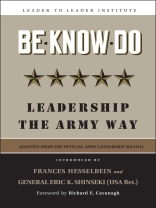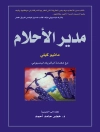The United States Army is one of the most complex, best run organizations in the world, and central to the Army’s success are strong leadership and exceptional leadership development. Army leaders must be able to act decisively and effectively in challenging situations. But the Army, despite its organizational structure, does not train leaders in a hierarchical manner. Dispersed leadership is the key to the success of the Army leadership model.
Now, for the first time, you can...
Tabella dei contenuti
Foreword xi
Richard E. Cavanagh
Introduction xiii
1. What a Leader Must Be, Know, and Do 1
2. The Character of Leaders 23
3. People Are at the Core 4...
Circa l’autore
Frances Hesselbein is chairperson of governors of the Leader to Leader Institute and editor-in-chief of its journal
Leader to Leader. Hesselbein served as CEO of th...












